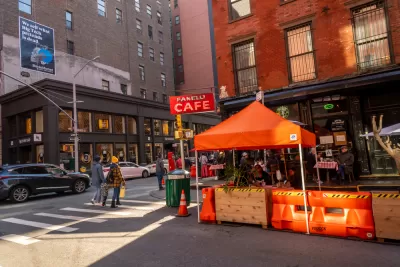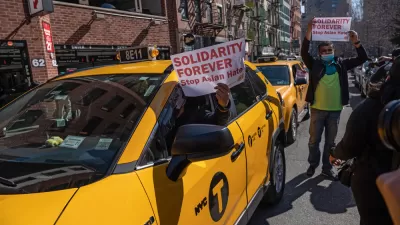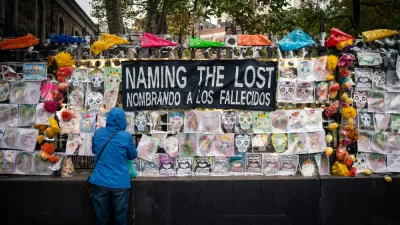A new technology- and data-drive approach to planning could provide direction as society faces challenges of unprecedented scale.

Jason King, associate and parametric design lead at IBI Group, writes about a technological innovation available to the planning profession that will allow informed responses to the novel crises of the COVID-19 pandemic: parametric modeling.
Here is how King describes parametric modeling, for the uninitiated:
The parametric modeling process — which can include the custom development of tools to assist the design of buildings, the planning of transit system and land use plans — enables the efficient use of large datasets and the correlation of variables to approach flexible planning. This unlocks many "what ifs" for a wide range of problems across multiple scales.
According to King, IBI Group is devoting much of its time and energy in developing parametric modeling to support cities responding to the COVID-19 pandemic and its related crises. The article also includes a case study of a parametric model used by the Los Angeles County healthcare system to anticipate operational challenges and also includes a section on holistic approach to data that cities must adopt to realize the potential of parametric modeling.
But before digging into those examples King describes the unprecedented nature of the COVID-19 pandemic, and how it requires a different kind of planning:
Generally speaking, the planning process needs to look for lessons learned in the past to make informed decisions about the future. Depending on the nature of the planning, the timespan from "past to future" can be decades. In the case of COVID-19, however, we are learning about the virus in real time. We do not have decades or even years of precedents to formulate a response. Therefore, pandemic planning processes must be agile with the ability to incorporate continuous uncertainty and change.
FULL STORY: A parametric approach to pandemic resilience

Study: Maui’s Plan to Convert Vacation Rentals to Long-Term Housing Could Cause Nearly $1 Billion Economic Loss
The plan would reduce visitor accommodation by 25,% resulting in 1,900 jobs lost.

North Texas Transit Leaders Tout Benefits of TOD for Growing Region
At a summit focused on transit-oriented development, policymakers discussed how North Texas’ expanded light rail system can serve as a tool for economic growth.

Using Old Oil and Gas Wells for Green Energy Storage
Penn State researchers have found that repurposing abandoned oil and gas wells for geothermal-assisted compressed-air energy storage can boost efficiency, reduce environmental risks, and support clean energy and job transitions.

Santa Barbara Could Build Housing on County Land
County supervisors moved forward a proposal to build workforce housing on two county-owned parcels.

San Mateo Formally Opposes Freeway Project
The city council will send a letter to Caltrans urging the agency to reconsider a plan to expand the 101 through the city of San Mateo.

A Bronx Community Fights to Have its Voice Heard
After organizing and giving input for decades, the community around the Kingsbridge Armory might actually see it redeveloped — and they want to continue to have a say in how it goes.
Urban Design for Planners 1: Software Tools
This six-course series explores essential urban design concepts using open source software and equips planners with the tools they need to participate fully in the urban design process.
Planning for Universal Design
Learn the tools for implementing Universal Design in planning regulations.
Ascent Environmental
Borough of Carlisle
Institute for Housing and Urban Development Studies (IHS)
City of Grandview
Harvard GSD Executive Education
Toledo-Lucas County Plan Commissions
Salt Lake City
NYU Wagner Graduate School of Public Service




























